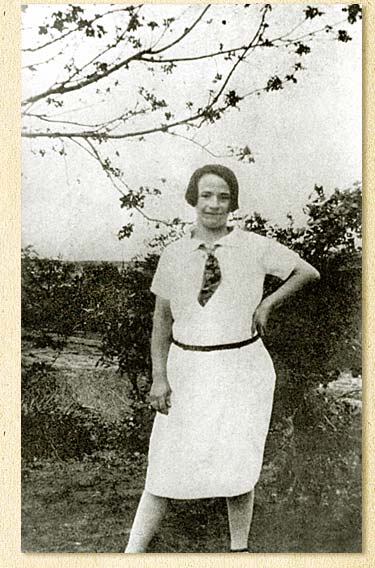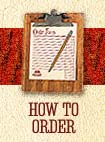Ella May Wiggins and The Mill Mother’s Song
by Patrick Huber
Patrick Huber is the author of Linthead Stomp, The Creation of Country Music in the Piedmont South
By far, the most famous balladeer to emerge out of the Gastonia Textile Strike of 1929 was Ella May Wiggins, a spinner at American Mill No. 1 in nearby Bessemer City and single mother of five whom the Communist press hailed as “the songstress of working class revolt in the South.” Only twenty-nine years old, she had given birth to nine children, but had lost four of them in quick succession to the combined effects of malnutrition and disease. Her ne’er-do-well husband deserted her and the children sometime in the mid-1920s, and thereafter Wiggins struggled single-handedly to raise her five surviving children, the oldest of whom was only eleven, on her weekly wages of $9. Margaret Larkin, who published two insightful 1929 articles on the Gastonia balladeer for The Nation and New Masses, attributed Wiggins’s union activism and her vision of social justice to her heartbreaking experiences as a single working mother. “I never made no more than nine dollars a week, and you can’t do for a family on such money,” Wiggins told crowds of fellow strikers in her speeches...That’s why I come out for the union, and why we all got to stand for the union, so’s we can do better for our children, and they won’t have lives like we got.”
Then, in the spring and summer of 1929, the Gastonia Textile Strike transformed the twenty-nine-year Bessemer City spinner into an acclaimed grassroots labor leader and union balladeer. During the strike, Wiggins reportedly composed at least twenty-one songs championing the union’s cause, including All Around the Jailhouse, The Big Fat Boss and the Workers, Chief Aderholt, Come and Join the I.L.D., Two Little Strikers, and The Mill Mother’s Song. According to Larkin, Wiggins modeled her “strike ballets,” as she called them, on “old mountain ballads” that she had learned as a child growing up in the Blue Ridge Mountains of western North Carolina. But, like other Gastonia strike balladeers, she also borrowed melodies from current hillbilly records, particularly those songs that were deeply marked by sorrow, death, and tragedy. Wiggins based All Around the Jailhouse, for example, on Jimmie Rodgers’s best-selling Victor recording of Waiting for a Train, which was issued less than two months before the Gastonia strike began. Vernon Dalhart’s 1925 Columbia recording of The Death of Floyd Collins, a topical ballad about the doomed Kentucky cave explorer, provided the tune for her Chief Aderholt. The other side of Dalhart’s best-selling disc contained his version of Little Mary Phagan, a topical ballad about the 1913 murder of an Atlanta factory girl. Wiggins adopted its melody for The Mill Mother’s Song.
Of all the strike songs Wiggins composed, the most famous is The Mill Mother’s Song, a beautiful blues ballad that Margaret Larkin described as a “classic expression of a working mother’s love.” In the song, Wiggins condemns industrial capitalism for essentially making it impossible for working mothers to fulfill their traditional responsibilities of homemaking and childrearing. Not only do textile mill owners prevent her from caring for her children during the eleven-hour night shifts she is forced to work, she asserts, but they also refuse to pay her a decent wage with which to provide her children the food and clothing they need. Wiggins concludes her song with a rousing call for grassroots political action that would, according to her, improve their deplorable plight. The song, sung at Wiggins’ September 17, 1929 funeral by a fellow female striker, is now better known as Mill Mother’s Lament after folklorist John Greenway retitled it in his 1953 study American Folksongs of Protest. The original version of Wiggins’ song, published posthumously in the October 1929 issue of the Labor Defender, goes:
 We leave our home in the morning, We leave our home in the morning,
We kiss our children good-bye,
While we slave for the bosses,
Our children scream and cry.
And when we draw our money,
Our grocery bills to pay,
Not a cent to spend for clothing,
Not a cent to lay away.
And on that very evening,
Our little son will say,
“I need some shoes, dear mother,
And so does sister May.”
How it grieves the heart of a mother,
You every one must know,
But we can’t buy for our children,
Our wages are too low.
Now listen to me, workers,
Both women and men,
We are sure to win our union,
If all would enter in.
I hope this will be a warning,
I hope you will understand,
And help us win our victory,
And lend to us a hand.
It is for our little children
That seem to us so dear,
But for us nor them, dear workers,
The bosses do not care.
But understand, all workers,
Our union they do fear,
Let’s stand together, workers,
And have a union here.
Time and again, Wiggins sang The Mill Mother’s Song and her other homespun ballads from the beds of trucks and on speakers’ platforms at strike meetings throughout Gaston County during the spring and summer of 1929. In his autobiography Proletarian Journey: New England, Gastonia, Moscow (1937), the National Textile Workers Union’s chief organizer in Gastonia, Fred E. Beal, remembered her as a central figure at the union’s nightly meetings:
"No evening passed without getting a new song from our Ella May, the minstrel of our strike. She would stand somewhere in a corner, chewing tobacco or snuff and fumbling over notes of a new poem scribbled on the back of a union leaflet. Suddenly some one would call for her to sing and other voices would take up the suggestion. Then in a deep, resonant voice she would give a simple ballad. . . . The crowd would join in with an old refrain and Ella May would add verse after verse to her song. From these the singers would drift into spirituals or hymns and many a ‘praise-the-Lord’ would resound through the quiet night."
As Beal’s colorful descriptions suggest, Wiggins transformed her personal experiences into universal songs that spoke directly to other textile workers, especially mill mothers, and through such songs she inspired support among her fellow millhands for the union. Wiggins possessed a powerful, ringing alto voice that contained, wrote Margaret Larkin, “an unmodulated vibrancy that touches the emotions more nearly than the purer notes of trained singers.” And, according to Larkin, it had a stirring effect upon the enthusiastic crowds before which Wiggins performed. “When Ella May sang, ‘How it grieves the heart of a mother / You every one must know . . .’ every woman in her audience did know, and responded to the common feeling,” observed Larkin. “When she sang, ‘We’re going to have a union all over the South,’ the strike meetings thrilled to the ring of militancy in her voice.” Wiggins’s ballads, Larkin believed, were “better than a hundred speeches,” because they “would travel through the textile towns, telling better than speeches or leaflets of the people’s faith in the union to give them a better life.”
Wiggins’s influential role as an inspiring speaker and balladeer won her praise from union leaders, fellow strikers, and Communist editors. But, on the other side of the picket line, she was singled out by mill owners and civic leaders as a target for assassination. “The bosses hated Ella May,” claimed one striker, “because she made up songs, and was always at the speakings. They aimed to git [sic] Ella May.” And they succeeded. On September 14, 1929, in broad daylight, a caravan of gun thugs ambushed a truckload of unarmed Bessemer City strikers en route to a union rally in Gastonia, and shot Wiggins, then pregnant with her tenth child, in the chest, killing her instantly. Wiggins’s murder raised a firestorm of protest across North Carolina and the nation. But no one was ever convicted of her slaying. On March 6, 1930, despite the testimony of more than fifty eyewitnesses, a Charlotte jury took only half an hour of deliberation to acquit the five Loray Mill employees indicted for her murder.
Wiggins’s martyrdom, combined with her stirring songs and stalwart union activism, ensured her enduring historical immortality, however. She appeared as a major character in Mary Heaton Vorse’s 1930 novel Strike!, the first of six now largely forgotten proletarian novels inspired by the Gastonia Textile Strike of 1929 that were published in the half-decade following the event. But Wiggins’s most enduring legacy rested on her “strike ballets,” and due primarily to the ballad-collecting efforts of Margaret Larkin, six of Wiggins’s complete songs have survived. Although most of the Gastonia strike songs were ephemeral, chiefly concerned with specific personalities and events that quickly faded from national headlines once the strike was broken, a few of Wiggins’s strike songs reached audiences far beyond the Carolina Piedmont. In the fall of 1929, after the strike collapsed, Margaret Larkin returned to New York City, where she introduced Wiggins’s strike ballads to sympathetic left-wing crowds through her national magazine articles and, as a singer and guitarist, through her Greenwich Village folk concerts. Wiggins’s ballads became influential as protest song models for Popular Front songwriters such as Woody Guthrie, Pete Seeger, and Lee Hays during the late 1930s and early 1940s, and emerged in more mainstream circles at the height of American folksong revival during the Cold War. University of Colorado folklorist John Greenway published Wiggins’s six surviving ballads in American Folksongs of Protest (1953), a pioneering study of grassroots labor and political songs. In 1955, Greenway, himself an accomplished folk revival singer and guitarist, cut a version of Ella May Wiggins’s Chief Aderholt for his Riverside concept album, American Industrial Folksongs. One year later, Pete Seeger recorded her Mill Mother’s Song under the title of Mill Mother’s Lament for his Folkways album, American Industrial Ballads. Since then, Wiggins’s strike songs have also appeared in numerous song anthologies, labor histories, and union booklets, including Hard Hitting Songs for Hard-Hit People (1967) and Working Women’s Music: The Songs and Struggles of Women in the Cotton Mills, Textile Plants and Needle Trades (1976).
Ella May Wiggins, now acclaimed “The Poet Laureate of the Gastonia Textile Strike of 1929,” is buried in Gaston County, in the Bessemer City Cemetery. So, too, according to local legend, is her murderer. A marble cross, which the local chapter of National Organization for Women erected on her previously unmarked gravesite on the fiftieth anniversary of her death, reads simply: “She was killed carrying the torch of social justice. September 14, 1929.”
|















